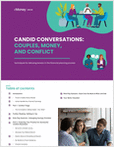When the financial crisis began in 2008, a large number of investors replaced their risky assets with fixed income securities. Since then, interest rates have remained at historic lows. Eventually, interest rates will rise and the fallout may be far worse than we’ve experienced in modern history in the United States.
In this article, the first in a two-part series, we’ll examine the characteristics of the most common types of fixed income investments and discuss the ratings behind these securities.
In Part II, we’ll conclude with a discussion on what could happen and what to do before interest rates begin to rise. Part II will also include a simple formula which you can use to calculate the loss of principal in a bond based on an increase in interest rates.
These two articles should provide you with the knowledge you’ll need to position your clients’ assets in preparation for higher interest rates.
Common Types of Fixed Income Securities
Fixed income offerings come in a variety of types. They differ by maturity, credit quality, underlying holdings, tax treatment, etc. The following table contains some general information on the most common types of fixed income securities.
It should be noted that, in many cases, the information is not entirely straightforward. For example, a municipal bond is typically issued in increments of $5,000. However, some issues may be sold in $1,000 increments.
Another example involves corporate bonds. Although most corporate bonds have a maturity ranging from 1 to 30 years, some )known as Century Bonds) have a 100 year maturity. In short, it all depends on the terms of the bond agreement.
When purchasing bonds, an investor may purchase individual bonds or select a packaged product such as a mutual fund, ETF or a closed-end fund. When selecting bonds, it’s important to understand the risk involved. For example, choosing a bond with a low credit rating will make you more susceptible to the risk of a default.
Also, it’s important to have an understanding of the future interest rate environment. I’m not implying that you should forecast interest rate trends. However, you should understand how an increase in interest rates would affect a specific fixed income investment. This will be covered in Part II of this series of Under the Hood articles on fixed income. Another important factor involves the rating of a particular issuer.








 December 30, 2014 at 08:05 AM
December 30, 2014 at 08:05 AM











